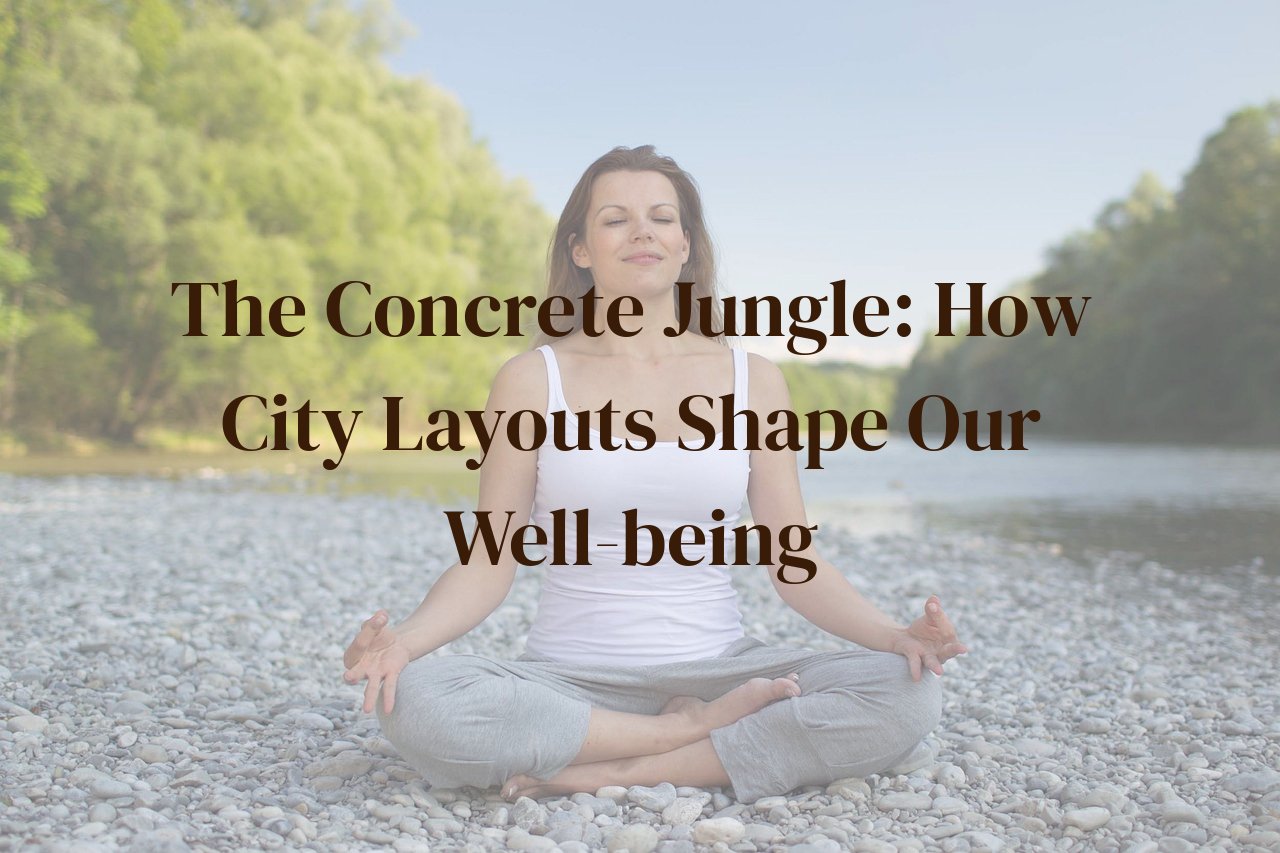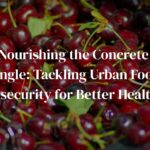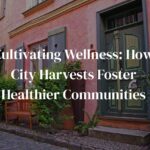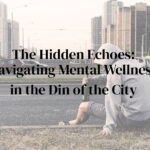
In this post, we’ll explore the fascinating ways urban architecture influences public health. From the placement of parks to the width of sidewalks, the design of our cities impacts our physical and mental well-being in more ways than one might initially think.
You’ll discover practical information about how city planning can either enhance or deteriorate public health, such as how walkability decreases obesity rates or how green spaces improve mental health. These insights could be life-changing, offering you the knowledge to advocate for healthier urban environments or even make more informed decisions about where you live and work.
Table of Contents
Green Spaces: Natural Oases in Urban Environments
In the midst of concrete blocks and asphalt roads, green spaces serve as natural sanctuaries that can significantly enhance urban dwellers’ well-being. The impact of these verdant oases extends far beyond aesthetics. They contribute to both mental and physical health in ways we may not initially realize.
Firstly, green spaces provide a much-needed respite from the hustle and bustle of city life. The calming effect of nature can lower stress levels, reduce anxiety, and even improve mood. I’ve often found myself gravitating towards parks and gardens when feeling overwhelmed by the relentless pace of urban life. It’s in these moments that I truly appreciate the tranquility that green spaces offer.
Moreover, green areas encourage physical activity, acting as natural gyms. Whether it’s a morning jog, an afternoon walk, or a weekend yoga session, these spaces make it easier for residents to maintain an active lifestyle. I remember the transformative effect regular walks in a nearby park had on my own fitness journey; it almost felt like nature was my personal trainer.
Green spaces also promote social interaction. These areas serve as gathering spots for community events, picnics, and various recreational activities. They foster a sense of community and belonging, which is crucial for mental health. Personally, some of my most cherished memories involve impromptu picnics and casual conversations with friends in our local park.
In addition to their immediate benefits, green spaces also offer long-term health advantages. Studies have shown that access to green environments can lower the risk of chronic illnesses such as heart disease and diabetes. They also improve air quality by filtering pollutants, making the urban environment a healthier place to live.
Another underappreciated aspect of green spaces is their role in child development. Playgrounds and open fields provide safe areas for children to play, explore, and develop their cognitive and motor skills. As a parent, I’ve noticed how my kids light up with joy and enthusiasm when they spend time in green spaces; it’s an irreplaceable part of their childhood.
Walkability and Public Transportation: A Path to Health
Living in a bustling city often means a hectic lifestyle, but have you ever considered how urban design specifically walkability and public transportation impacts our well-being? Well, let me share some personal insights and benefits that I’ve observed over the years.
First off, a walkable city encourages physical activity. When sidewalks are wide, well-maintained, and interconnected with various parts of the city, people are more likely to choose walking over other modes of transportation. This isn’t just a guess; I’ve noticed that my own daily steps increased dramatically when I moved to a neighborhood with high walkability. Regular walking aids in weight management, reduces the risk of heart disease, and generally improves one’s mood. Personally, the morning walks to work have become my favorite time for reflection and planning my day.
Now, let’s talk about public transportation. Efficient public transportation networks reduce reliance on cars, which not only lessens traffic congestion but also lowers emissions, leading to better air quality. You might find this surprising, but ever since I started taking public transport, my stress levels have decreased. Instead of battling traffic, I now get a chance to read, listen to podcasts, or simply enjoy some downtime. Does that sound familiar?
Interestingly, cities designed with walkability and robust public transport systems often have lower rates of chronic diseases. Why? Because increased mobility means more opportunities for spontaneous physical activities like walking to lunch spots or even taking stairs at train stations. There’s an infectious positive energy when you see people moving around rather than being stuck in cars.
Another overlooked benefit is the sense of community fostered by walkable streets and public transit. In contrast to isolated car journeys, public transportation and pedestrian paths offer social interaction, which significantly impacts mental health. I personally have made a number of acquaintances during my daily commute, leading to a sense of belonging in the midst of a big city.
However, it’s not all rosy. There are challenges like maintaining the safety and cleanliness of these pathways and transit systems. Personal safety during late hours has been a concern for me and many others. Advocacy for better infrastructure has become a community effort, proving that when a city invests in walkability and public transportation, it invests in its people’s health.
In conclusion, the way our cities are designed profoundly impacts our physical and mental health. Walkable areas and effective public transportation don’t just improve individual health; they foster a sense of community and reduce environmental impact. So next time you’re stuck in traffic, perhaps you’ll consider how a stroll or a train ride could change your day—and your life.
Urban Noise Pollution: A Hidden Health Hazard
[“
Living in the heart of a bustling city, amidst the constant hum of traffic, the blaring of car horns, and the ceaseless chatter of people, one might almost forget what true silence sounds like. Yet, the omnipresent noise isn’t just a trivial annoyance; it’s a silent assailant on our health.
“, “
One morning, while sipping my coffee on my apartment’s tiny balcony, I realized how deeply the city’s noise had infiltrated my life. The relentless cacophony had gradually chipped away at my peace, and I was not alone in this experience. Many urbanites, perhaps unknowingly, endure the same assault on their well-being.
“, “
Noise pollution, often overshadowed by more visible urban problems, has profound health repercussions. Chronic exposure to high noise levels is linked to increased stress hormones, which can aggravate conditions such as hypertension and cardiovascular diseases. It’s fascinating—and rather alarming—how the relentless noise can silently hike up your heart rate while you remain oblivious.
“, “
Moreover, it’s hard to overlook the impact on sleep quality. Imagine trying to rest when your environment is a constant barrage of sounds. Poor sleep can weaken immune function, impair cognitive abilities, and even contribute to mental health disorders, such as depression and anxiety. I too have spent many restless nights, staring at the ceiling, mentally cursing the honking cars and late-night revelers.
“, ‘
Interestingly, children are not spared from the effects of noise pollution. Studies have shown that it can impair cognitive development in young minds. During my time volunteering at a local school, I noticed how difficult it was for kids to concentrate on their studies amidst the noise, and how they seemed more fatigued and less attentive.
‘, “
Another often overlooked consequence of urban noise is its impact on social behavior. Increased noise levels can lead to heightened irritability and decreased patience, often fueling conflicts and reducing the overall quality of life. Personally, I’ve found that the constant noise leaves me more irritable and less inclined to engage in social gatherings, preferring the rare quiet of my own space instead.
“, “
There’s also a fascinating psychological concept known as ‘learned helplessness’ that can result from prolonged exposure to uncontrollable noise. People may become passive, believing they have no control over their environment, which can contribute to a sense of depression and disengagement from life.
“, “
Lastly, let’s not forget the secondary effects on urban wildlife, which in turn affect city dwellers. Noise can disrupt animal communication, breeding, and feeding patterns, indirectly altering urban ecosystems and reducing biodiversity. This disruption can have cascading effects on the well-being of a city’s human inhabitants as well.
“, “
Tackling urban noise pollution isn’t straightforward, but there are measures that city planners and individuals can take. Implementing stricter regulations on noise levels, creating soundproofing policies for buildings, and increasing green buffers can all contribute to a quieter, healthier urban environment. My personal journey towards escaping the city’s noise led me to invest in good-quality earplugs and a white noise machine, minor palliatives that offered much-needed respite in an otherwise unyielding din.
“, “
In conclusion, while the city may never be silent, recognizing and addressing the pervasive issue of noise pollution can significantly improve public health. It’s about time we all turned down the volume on urban living.
“]
High-Rise Living: The Psychological Impact
As someone who has spent years living in various cityscapes, I have experienced firsthand how high-rise living can shape one’s mental landscape. At first glance, the panoramic views and convenience might seem enticing, but beneath the surface lies a more complex picture concerning our psychological well-being.
Isolation at Heights: Despite being surrounded by a sea of humanity, high-rise living often fosters a sense of isolation. When people live several floors above street level, spontaneous social interactions diminish. This lack of casual encounters can lead to feelings of loneliness and detachment, exacerbating mental health issues like anxiety and depression. I’ve noticed that neighbors appear more like strangers, contributing to a sense of disconnection from the community.
Natural Light Deficiency: Living higher up may mean more exposure to sunlight, but not always in the way you might expect. High-rises often feature smaller balconies, if any at all, and thick, tinted windows to ensure privacy. This architectural choice can result in less natural light penetrating your living area, potentially affecting your circadian rhythms and contributing to seasonal affective disorder (SAD). I’ve experienced how the allotment of natural light in a high-rise can oscillate dramatically during the day, disrupting sleep patterns and mood.
Heightened Stress Levels: The shear scale and density of high-rises can make basic tasks, like taking the elevator or finding parking, a stressful ordeal. Frequent elevator breakdowns or power outages can amplify anxiety and stress. In my time living in high-rises, I’ve faced multiple instances of mechanical failures that left me feeling trapped and helpless.
Noise Pollution: Although it might seem like living higher up would offer a respite from the urban din, even top-floor apartments are not immune to noise pollution. Traffic noises, construction sounds, and even the hum of elevators can permeate the living space, causing continual stress. I still recall the unsettling sounds of emergency sirens echoing upwards, making it hard to unwind and relax.
Limited Access to Greenery: The concrete expanses around high-rises usually lack immediate access to green spaces. While some buildings incorporate rooftop gardens, they often fall short of genuine natural interaction. Living high above, I’ve often missed the earthy smell of grass, the rustling of leaves, and the general tranquility green spaces offer, making me crave a deeper connection with nature.
Impact on Children: High-rise environments can be particularly challenging for families with young children. Limited play areas and reduced outdoor time can stunt the physical and social development of kids. From my observations, children in high-rises often appear more withdrawn compared to those who grow up with yards to play in, affecting their long-term emotional health.
In conclusion, while high-rise living offers numerous conveniences, it also presents distinct psychological challenges. Acknowledging these impacts is crucial for city planners and residents alike in order to create living environments that nurture both mind and body.
Community Design: Building Social Connections
The design of urban communities can significantly influence the social connections among its residents. Having lived in various cities, I have seen firsthand how different community designs foster or hinder social interaction.
One critical aspect is the inclusion of communal spaces like parks, plazas, and public gardens. These areas serve as gathering spots where people can engage in unplanned interactions, thereby strengthening the social fabric. I recall the weekends spent at my local park where I would often strike up conversations with fellow joggers or parents at the playground. These small, everyday interactions collectively contribute to a sense of community.
Another vital feature is mixed-use developments that incorporate residential, commercial, and recreational spaces within close proximity. This design encourages people to walk rather than drive, promoting more casual encounters. One of my favorite apartment complexes was part of a mixed-use development where a grocery store, coffee shop, and gym were just steps away. The convenience of walking to get my morning coffee often led to delightful, spontaneous chats with neighbors.
The layout of streets also plays a role. Implementing grid patterns with shorter blocks can make areas more walkable and increase the chances of people meeting. In contrast, I remember feeling isolated living in a suburb with long, winding streets and limited pedestrian paths. The absence of shared spaces made it difficult to form meaningful connections with my neighbors.
Community centers and local events further contribute to social cohesion. These centers can host various activities from yoga classes to book clubs, providing opportunities for residents to connect over mutual interests. I once participated in a weekly farmer’s market organized by our community center. It was not only a place to buy fresh produce but also a vibrant social hub where friendships were cultivated.
Urban planners also recognize the importance of inclusive, accessible designs that consider the needs of all age groups and socioeconomic backgrounds. For instance, having amenities like senior centers, playgrounds, and affordable housing options all within a community promotes diverse interactions. My experience volunteering at a local senior center was incredibly fulfilling; it not only allowed me to bond with the elderly but also to meet other members of the community who shared my passion for giving back.
Conclusion
The layout of our urban environments profoundly affects our health, from reducing stress levels to increasing physical activity. By understanding these impacts, you can become more aware of the subtle ways that city design influences your daily life and well-being.
Advocating for healthier urban designs can lead to more vibrant, connected, and healthier communities. So, the next time you stroll through a park or use public transportation, remember the invisible hand of urban architecture shaping your health.



